A Western masterpiece.
It took an Italian to make the greatest Western movie of all time. When Sergio Leone came to make Once Upon a Time in the West (1968) he already had three of the finest Westerns under his belt – The Man with No Name trilogy with Clint Eastwood. But for this, his final effort in the genre, he set out to surpass himself. He did so, in spades.
Forget Shane, forget The Searchers, forget High Noon, forget The Man Who Shot Liberty Valance, forget The Long Riders.
Once Upon a Time in the West is in a class of One.
What makes this masterpiece so special? A great director, of course, who has an innate grasp of what the railroad meant to America’s growth in the nineteenth century and an organic sense of the great expanses of the west. A script which is direct, simple and easy to follow. The finest actors – you cannot make a great movie with pikers. Charles Bronson, Henry Fonda, Claudia Cardinale and Jason Robards. You can’t improve on that. Superb cinematography by Tonino Delli Colli. But the glue that holds the whole project together and escalates it to greatness is Ennio Morricone’s extraordinary score, in turns lush, comical, poignant, tragic and triumphal.
At almost three hours in length this is not a movie for modern attention spans. Nor is it one for poky screens. With a 100″ screen you begin to understand what Leone demands – that you must be totally immersed in the picture, at one with the landscape of Monument Valley and the West. But you really need to see this in a revival house on something 250″ or more in glorious widescreen, which fits the infinite vistas of the west just so. And if you have never been through Monument Valley in Utah and Arizona, you must go. Your appreciation of the vastness of the west will redound to your enjoyment of the movie.
Not only is the whole an immersive, captivating experience, there are individual pieces of magic which, even out of context, are memorable like in no other Western. The opening 14 minute sequence, with barely a word spoken, culminates in an explosive shoot out. Yet during those fourteen minutes you are treated to an orgy of sound – wind, creaking floorboards, rusty signs swaying, the ticker tape machine, the fabulous sequence of Jack Elam with the fly – it’s all there. And it is magic.
Here are some favorite vignettes:
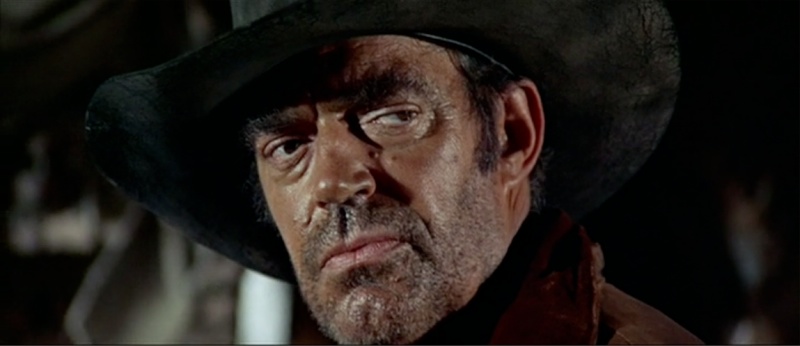
Jack Elam, awaiting Bronson’s train.
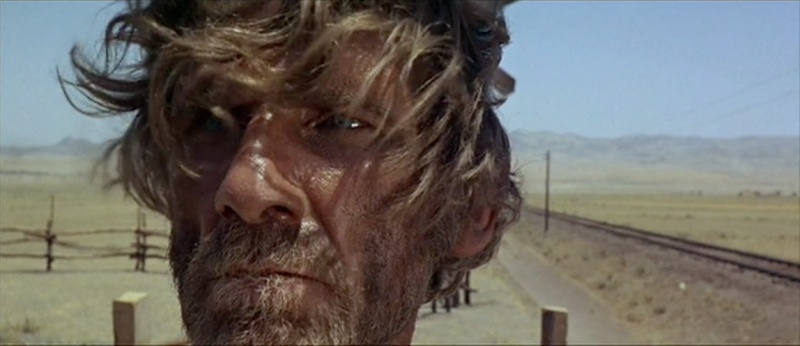
Al Mulock in an extraordinary ultra wide close-up, awaits Bronson’s train.
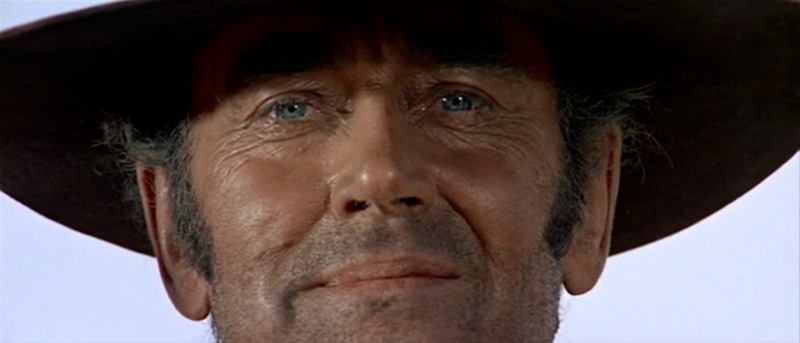
A sadistic Henry Fonda about to kill the McBain child in cold blood.
This was Fonda’s only bad guy rôle, and his greatest by far. The mix of sadism and delight in what he is about to do in the original is palpable and chilling.
When Cardinale’s character arrives in Flagstone, the railroad town in Monument Valley, there follows what is simply the greatest soaring pan shot in cinema history. Not even Hitchcock comes close to anything like this and only Kubrick’s opening Steadicam work in ‘The Shining’ even compares.
She enters the station house:
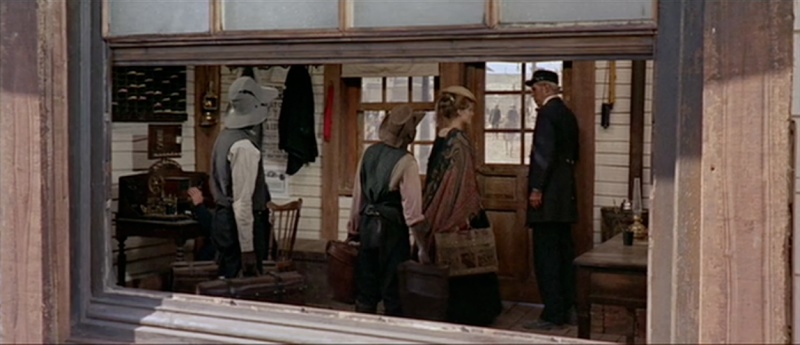
The camera then rises in the air and soars over the building , showing her exiting the other side:
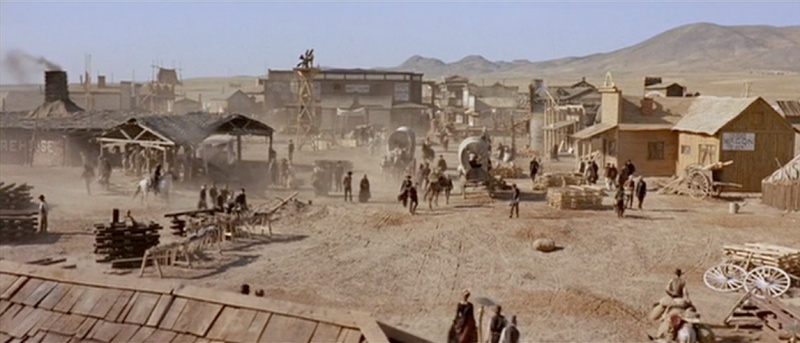
Morricone’s music soars with the camera and there, in one 10 second sequence, you have a perfect encapsulation of what America’s nineteenth century growth was all about. The effect simply cannot be conveyed in a static web page.
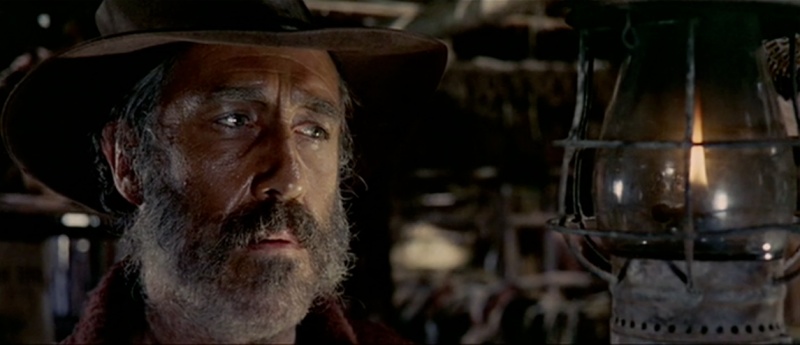
Jason Robards’s lovable bandit rogue provides comic relief, suitably aided by Morricone’s score.
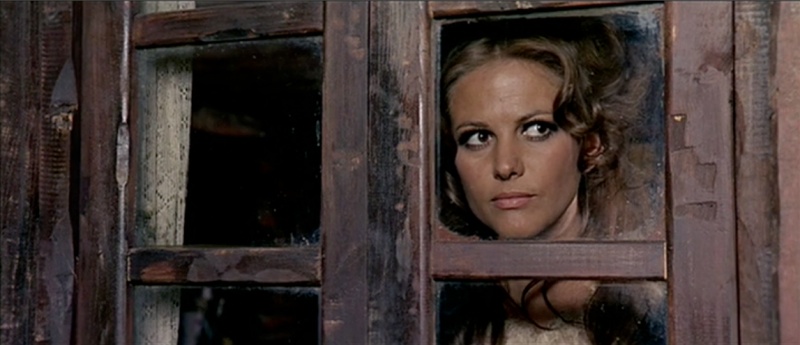
There are many stunning still photographs, like this one of Claudia Cardinale.
Perhaps the most memorable still is of Cardinale lying on her bed after attending her husband’s funeral. The shot, from above, views her through a black veil.
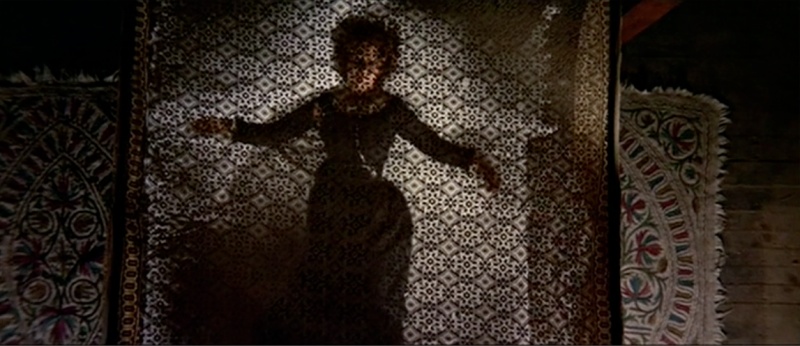
One of the most effective techniques used by Leone is the super close-up of the many craggy faces in the movie, never more effectively than with Bronson’s. On a huge screen this is quite overwhelming.
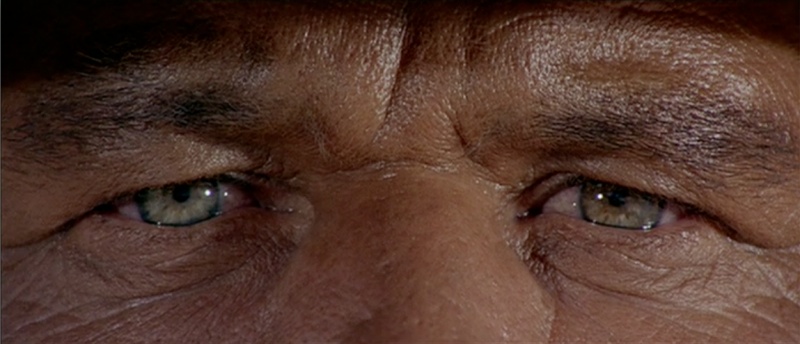
Bronson at the final shootout with Fonda.
An orgy of pictures, sound, emotions, the triumph of right over wrong, this is any photographer’s ultimate movie.
Update February 28, 2016:
Ennio Morricone just won the Oscar for the best film score for his music to Quentin Tarantino’s ‘Hateful Eight’ at the age of 87. The oldest ever recipient of an Oscar. He should have received it 48 years earlier for ‘Once Upon a Time in the West’. Or for ‘The Good, the Bad and the Ugly’ in 1966. Or for ‘The Mission’ in 1986. Or for ‘Bugsy’ in 1991. Or …. heck, this will do fine. Just delighted for him.
Update July 5, 2020:
Ennio passed away.